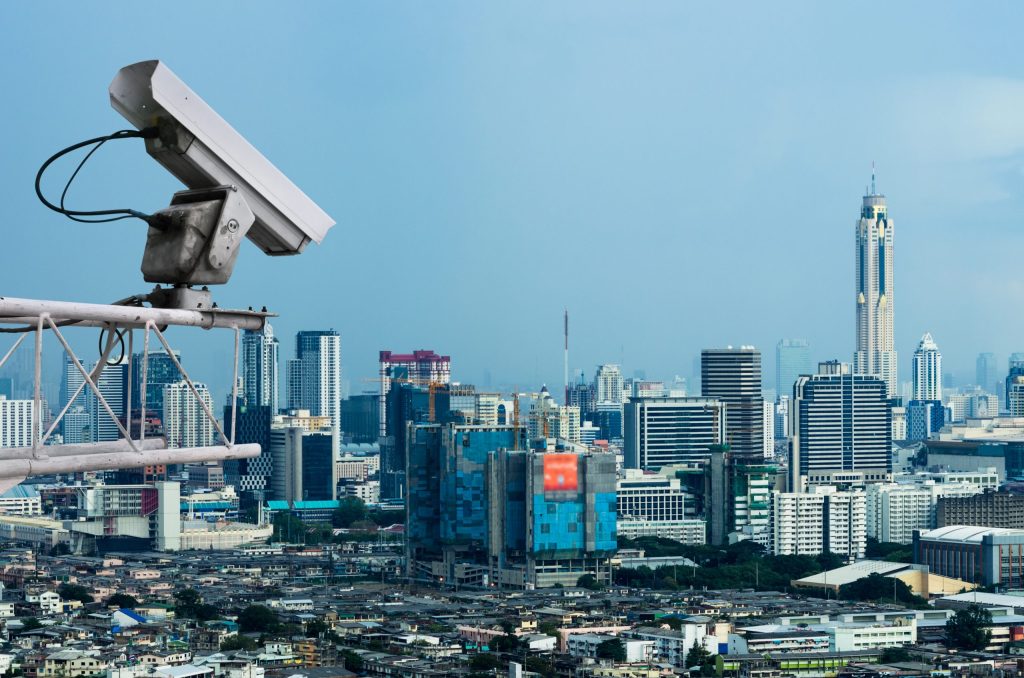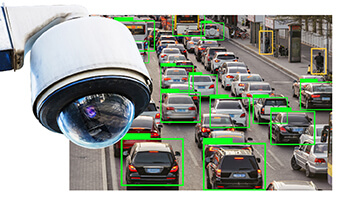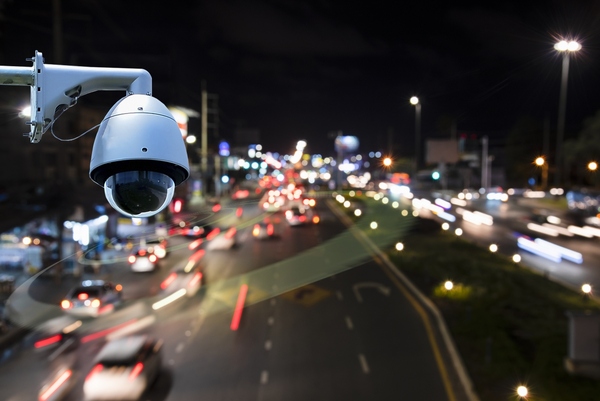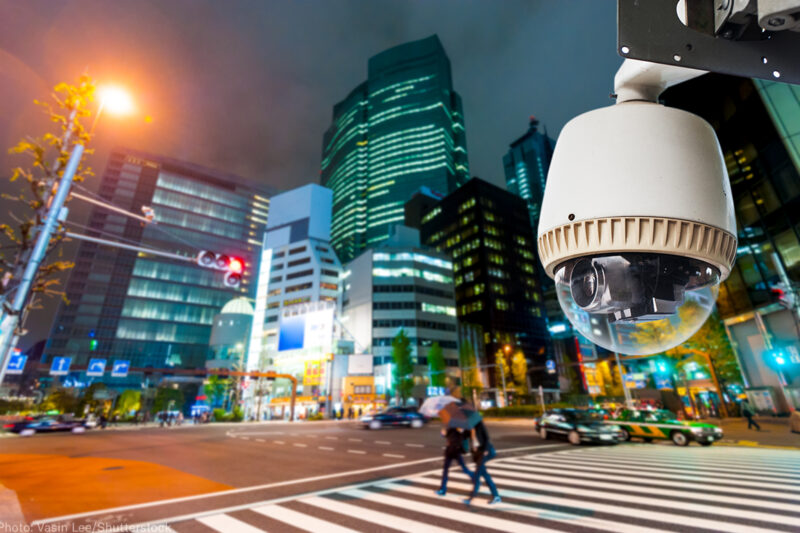10 Ways LPR Camera are Enhancing Security in Smart Cities
In the dynamic landscape of modern urbanization, the concept of smart cities has emerged as a beacon of progress, promising enhanced efficiency, sustainability, and most importantly, security. Central to the realization of this vision are advanced technologies that empower cities to address complex challenges effectively. Among these technologies, License Plate Recognition (LPR) cameras stand out as necessary tools, revolutionizing the way cities manage security, traffic, and law enforcement. In this comprehensive exploration, we delve deep into the complex role of LPR cameras, uncovering ten important ways they are enhancing security in smart cities.
Table of Contents
How LPR Cameras are Enhancing Security in Smart Cities

1. Crime Prevention and Detection:
At the front of LPR camera system functionality lies their remarkable ability to prevent and detect crime. Equipped with sophisticated optical character recognition (OCR) technology and powerful algorithms, these cameras can swiftly identify and analyze license plates in real time. This capability enables law enforcement agencies to track stolen vehicles, identify suspects, and solve crimes with previously shown efficiency. Whether it’s capturing the license plate of a getaway car or identifying vehicles linked to criminal activities, LPR cameras serve as alert surveillance, supporting the security infrastructure of smart cities.
2. Real-Time Monitoring and Alerts:
The essence of effective security lies in the ability to respond swiftly to emerging threats and incidents. LPR cameras excel in this regard by providing real-time monitoring and instant alerts to law enforcement authorities. Through continuous surveillance and automated license plate recognition, these cameras can flag suspicious vehicles, unauthorized entries, or vehicles of interest, enabling proactive intervention and timely response. This proactive approach not only enhances the security posture of smart cities but also fosters a safer environment for residents and visitors alike.
3. Traffic Management and Optimization:

In closely populated urban areas, efficient traffic management is essential for ensuring smooth mobility and reducing congestion. LPR cameras play a pivotal role in this domain by supporting the automatic identification of vehicles and monitoring traffic flow in real-time. By analyzing license plate data, these cameras enable traffic authorities to implement dynamic routing strategies, optimize signal timing, and mitigate congestion hotspots. Moreover, LPR cameras aid in enforcing traffic regulations, such as HOV lane violations or illegal parking, thereby contributing to safer and more orderly transportation systems within smart cities.
4. Parking Enforcement and Compliance:
Parking enforcement is a maintenance challenge for urban municipalities, often Infected by issues, violations, and inefficiencies. LPR cameras offer a game-changing solution to this problem by automating parking enforcement processes. By scanning license plates of parked vehicles, these cameras can identify violations such as overstaying time limits, parking in prohibited areas, or using fake permits. This streamlines enforcement efforts, reduces administrative load, and ensures fair and equitable parking practices, thus enhancing the overall urban experience for residents and visitors.
5. Border Security and Cross-Border Monitoring:
In an era of increased globalization and mobility, border security remains a top priority for governments worldwide. LPR cameras play a crucial role in improving border control measures by providing real-time monitoring and surveillance capabilities. At border crossings and checkpoints, these cameras can swiftly screen vehicles, match license plate data with watchlists, and flag suspicious or unauthorized entries. Integrated with border control databases, LPR cameras enhance situational awareness, enable border management, and mitigate security risks, thereby safeguarding the integrity of smart cities and national borders.
6. Vehicle Access Control and Perimeter Security:
Securing sensitive facilities, corporate locations, and residential communities requires robust access control measures. LPR cameras offer an effective solution by regulating vehicle access and monitoring border boundaries. By cross-referencing license plate data with authorized vehicle lists, these cameras can grant or deny entry to restricted areas, detect unauthorized vehicles, and trigger alerts in case of security breaches. This capability strengthens the physical security infrastructure of smart cities, safeguarding critical assets and infrastructure from potential threats or attacks.

7. Integration with Surveillance Systems:
In the interconnected ecosystem of smart cities, integration is key to maximizing the effectiveness of security systems. LPR cameras seamlessly integrate with existing surveillance infrastructure, enhancing its capabilities and extending its reach. By combining license plate recognition with video analytics, facial recognition, and other sensors, these cameras provide comprehensive situational awareness, actionable intelligence, and a complete view of urban environments. This integration empowers law enforcement agencies to detect, deter, and respond to security incidents more effectively, thereby enhancing overall urban resolve.
8. Support for Public Safety Initiatives:
Public safety initiatives rely on timely and accurate information distribution to respond to emergencies, missing persons, or Violet Alerts. LPR cameras play a vital role in supporting these initiatives by providing real-time data on vehicle movements and locations. In collaboration with law enforcement agencies, these cameras can quickly identify vehicles associated with emergencies, track their location, and facilitate rapid response efforts. By leveraging the power of technology and data-driven insights, LPR cameras contribute to saving lives, protecting communities, and promoting public safety within smart cities.
9. Data Analytics for Crime Prevention:
The addition of data generated by LPR cameras presents an invaluable opportunity for crime prevention and predictive analytics. By analyzing historical license plate data, cities can identify patterns, trends, and hotspots associated with criminal activities. Machine learning algorithms can then be deployed to predict future crime incidents, allocate resources strategically, and proactively address emerging threats. This data-driven approach empowers law enforcement agencies to stay ahead of criminals, enhance community policing efforts, and foster safer neighborhoods within smart cities.

10. Privacy Safeguards and Ethical Considerations:
While the benefits of LPR cameras are undisputed, it’s essential to address privacy concerns and ethical considerations to maintain public trust and confidence. Smart cities must implement robust privacy safeguards, data encryption measures, and access controls to protect the personal information collected by LPR cameras. Transparent policies, accountability mechanisms, and public engagement initiatives are also critical to ensuring the ethical use and responsible deployment of these technologies. By striking a balance between security necessary and individual privacy rights, smart cities can harness the full potential of LPR cameras while upholding fundamental freedoms and civil liberties.
Conclusion:
In conclusion, License Plate Recognition cameras represent a transformative technology that is reshaping the security landscape of smart cities worldwide. From crime prevention and traffic management to border security and public safety initiatives, LPR cameras offer a multitude of benefits that contribute to building safer, stronger urban environments. However, realizing the full potential of these cameras requires a holistic approach that addresses privacy concerns, ethical considerations, and the need for transparent governance. As smart cities continue to change and recognize innovation, LPR cameras will undoubtedly remain at the front of urban security strategies, safeguarding communities and enhancing the quality of life for all residents.

